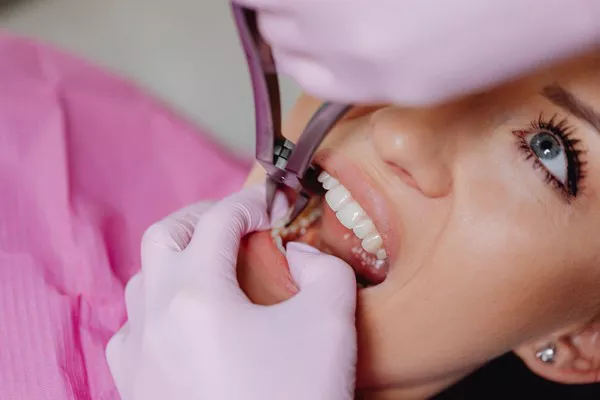Affirm that titanium dental implants can indeed be removed, although it’s a rare procedure since implants are designed to be a permanent solution.
Titanium dental implants, renowned for their durability and biocompatibility, are intended to serve as a permanent solution for tooth replacement. However, there are instances where their removal becomes necessary. Although the process is rare and typically avoided, dental professionals can and do perform implant removals under specific circumstances. This article delves into the reasons for removal, the procedures involved, potential risks, post-removal care, and replacement options, ensuring a comprehensive understanding for patients and practitioners alike.
Reasons for Removal
While titanium dental implants are designed to be a lasting solution, various factors may necessitate their removal:
1. Infection: Peri-implantitis, a form of gum disease that affects the tissues surrounding the implant, can lead to severe inflammation and bone loss, making removal necessary to prevent further damage.
2. Implant Failure: This can occur due to lack of osseointegration, where the implant fails to bond with the bone. Factors like poor bone quality, inadequate surgical technique, or excessive load on the implant can contribute to this failure.
3. Rejection: Although rare, the body might reject the implant due to an allergic reaction to titanium or other materials used in the implant.
4. Mechanical Problems: Issues such as a fractured implant or damaged prosthetic components can make the implant non-functional, necessitating its removal.
5. Aesthetic Reasons: Occasionally, an implant may not meet the aesthetic expectations of the patient, prompting its removal and replacement.
The Removal Process
The removal of a titanium dental implant is a delicate surgical procedure that aims to minimize damage to the surrounding bone and tissue. Here’s an overview of the process:
1. Pre-Surgical Evaluation: A thorough assessment, including imaging studies such as X-rays or CT scans, helps determine the precise position of the implant and the condition of the surrounding bone.
2. Surgical Techniques: The choice of technique depends on the implant’s condition and the bone’s health. Common methods include:
3. Trough Bur Technique: A specialized tool called a trough bur is used to create a small trench around the implant, gradually loosening it from the bone. This method is precise but requires considerable skill to avoid excessive bone loss.
4. Adapter Technique: An adapter is used to grip the implant, allowing the surgeon to unscrew it from the bone. This method is less invasive and often preferred if the implant is loose or the surrounding bone is strong enough to withstand the torque.
5. Minimizing Bone Loss: Preserving bone is crucial for potential future implant placement. Techniques such as atraumatic extraction and the use of piezosurgical instruments, which cut bone with ultrasonic vibrations, help in minimizing bone loss.
Risks and Considerations
The removal of dental implants carries several risks and considerations:
1. Damage to Surrounding Tissues: The process can potentially damage the surrounding bone and soft tissues, which might require additional surgical interventions such as bone grafting.
2. Bone Grafting: If significant bone loss occurs during removal, bone grafting might be necessary to restore the area for future implant placement.
3. Healing Time: The surgical site needs adequate time to heal, which can vary depending on the extent of the surgery and the patient’s overall health.
4. Infection and Inflammation: As with any surgical procedure, there is a risk of infection and inflammation. Proper surgical technique and post-operative care are essential to minimize these risks.
Post-Removal Care
Proper care after implant removal is crucial to ensure optimal healing and prepare the site for any potential future dental procedures. Here are the key aspects of post-operative care:
1. Oral Hygiene: Maintaining excellent oral hygiene is vital. This includes gentle brushing with a soft-bristled toothbrush and rinsing with an antiseptic mouthwash to prevent infection.
2. Pain Management: Over-the-counter pain relievers and prescribed medications help manage post-surgical pain and discomfort.
3. Dietary Adjustments: Soft foods and avoiding hot or spicy foods help protect the surgical site and promote healing.
4. Follow-Up Appointments: Regular follow-ups with the dental surgeon ensure proper healing and address any complications promptly.
Replacement Options
After the removal of a dental implant, several replacement options can be considered:
1. New Implant Placement: If the bone and surrounding tissues are healthy, a new implant can be placed after a healing period. Bone grafting might be necessary if there was significant bone loss during removal.
2. Bridge or Denture: In some cases, patients may opt for a dental bridge or a removable denture instead of a new implant, depending on their overall dental health and personal preference.
3. Healing Period: Typically, a healing period of several months is required before placing a new implant. This allows the bone and tissues to regenerate adequately.
Costs and Insurance
The cost of dental implant removal can vary significantly based on the complexity of the procedure, the need for additional treatments like bone grafting, and geographical location. Generally, the removal procedure itself can range from $500 to $1,500 or more. Here’s a breakdown of the cost considerations:
1. Surgical Fees: The primary cost includes the surgeon’s fee, which varies depending on the complexity of the removal.
2. Diagnostic Imaging: Pre-surgical imaging such as X-rays or CT scans add to the overall cost.
3. Additional Procedures: Costs increase if bone grafting or other additional procedures are needed.
Regarding insurance coverage, dental insurance plans may cover part or all of the removal costs, particularly if the procedure is deemed medically necessary due to infection or implant failure. It’s crucial to check with your insurance provider to understand the specifics of your coverage.
Finding a Specialist
Choosing a qualified specialist is essential for a successful implant removal and any subsequent treatments. Here are steps to find the right professional:
1. Referrals: Ask for referrals from your general dentist or seek recommendations from friends and family.
2. Research: Look for oral surgeons or periodontists with extensive experience in implant removal. Check their credentials, patient reviews, and before-and-after photos of previous cases.
3. Consultations: Schedule consultations with potential specialists to discuss your case, evaluate their approach, and ensure you feel comfortable with their expertise and communication style.
Conclusion
While titanium dental implants are designed to be a permanent solution, their removal is sometimes necessary due to infection, failure, or other issues. Understanding the removal process, potential risks, and post-operative care is crucial for patients facing this situation. By choosing a qualified specialist and following proper care guidelines, patients can navigate implant removal successfully and explore options for replacement, ensuring their long-term dental health and satisfaction.
FAQs about Dental Implants
1. Are titanium implants removable?
Yes, titanium dental implants are removable, although the procedure to remove them is more complex than the initial placement. Titanium implants are designed to integrate with the jawbone through a process called osseointegration, which makes them very stable and secure. Removal typically becomes necessary if there are complications such as infection, implant failure, or significant bone loss around the implant. The procedure to remove a titanium implant must be performed by a skilled dental professional, usually an oral surgeon, to ensure minimal damage to the surrounding bone and tissues.
2. What are the risks of removing dental implants?
Removing dental implants carries several risks, including:
Bone Loss: The removal process can lead to additional bone loss, especially if the implant has already failed due to bone resorption.
Damage to Surrounding Structures: There is a risk of damaging nearby teeth, nerves, or blood vessels during the removal process.
Infection: As with any surgical procedure, there is a risk of infection during and after the implant removal.
Prolonged Healing Time: The jawbone and surrounding tissues may take longer to heal after the implant is removed, particularly if there was significant inflammation or infection.
Difficulty in Future Implant Placement: Subsequent implant placement might be more challenging due to the changes in bone structure or the need for bone grafting.
3. How difficult is it to remove a dental implant?
The difficulty of removing a dental implant depends on several factors, including the type of implant, the duration it has been in place, and the extent of osseointegration. Generally, removing an implant that has been integrated into the bone is more challenging than placing it. The process typically involves:
Assessment: A thorough assessment using X-rays and possibly CT scans to evaluate the implant’s position and the condition of the surrounding bone.
Surgical Procedure: The procedure often involves making an incision in the gum tissue to expose the implant. Specialized instruments are then used to carefully loosen and remove the implant.
Bone Grafting: In cases where significant bone loss has occurred, bone grafting may be necessary to restore the site for future implant placement or to maintain the structure of the jawbone.
The procedure requires skill and precision to avoid damaging the surrounding bone and tissues, and it should be performed by an experienced oral surgeon or periodontist.
4. How long do titanium dental implants last?
Titanium dental implants are known for their durability and long lifespan. With proper care, titanium implants can last 20 years or more. Several factors contribute to the longevity of titanium dental implants:
Oral Hygiene: Maintaining good oral hygiene practices, including regular brushing, flossing, and professional cleanings, is crucial for the longevity of dental implants.
Lifestyle Factors: Avoiding smoking and excessive alcohol consumption can positively impact the lifespan of dental implants.
Regular Dental Check-ups: Regular visits to the dentist for check-ups and cleanings help monitor the health of the implant and surrounding tissues.
Overall Health: Systemic health conditions such as diabetes or osteoporosis can affect bone health and, consequently, the longevity of dental implants.
Initial Placement: The skill of the dental professional during the initial placement of the implant also plays a significant role in its long-term success.
On average, studies have shown that the survival rate of titanium implants after 10 years is between 90-95%, making them a reliable long-term solution for tooth replacement.
You Might Be Interested In





























